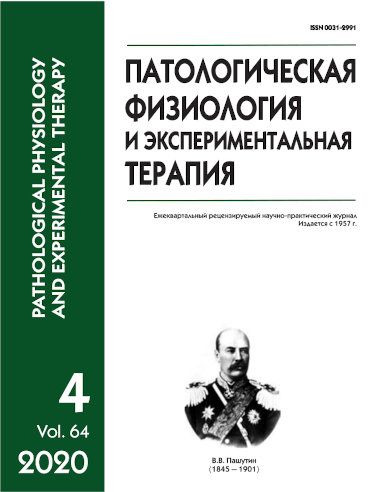The experience of colorectal cancer xenograft heterotopic modeling of various cell types on athymic BALB/c nude mice
Abstract
Introduction. The high prevalence of colorectal cancer (СС) stimulates scientists and physicians to search methods for СС diagnosis and effective therapy, which requires appropriate animal models at the stage of development and preclinical studies.
Methods. CC cell cultures (DLD-1, HCT 116, and HT-29) were used for heterotopic xenograft modeling in BALB/c nude mice. The cell suspension was injected subcutaneously with a syringe.
Results. CC cells from ATCC (American Type Culture Collection) were cultivated until obtaining the required number of cells for xenograft modeling (20 days). The HCT-116 cell culture developed more actively and formed a monolayer three times faster than DLD-1 and HT-29 cells. Survival of the mice after subcutaneous transplantation was 100%. Xenografts of approximately 1 cm3 volume formed at 17-26 days after grafting. Transplantability of the injected cells was 100% for HCT-116, 75% for DLD-1, and 60% for HT-29.
Conclusion. The experimental modeling of subcutaneous heterotopic CC xenografts in BALB/c nude mice showed a high level of reproducibility with absolute 100% – survival of recipient mice.
Downloads
References
2. Denisenko V.L., Gain Ju.M. Complications of colorectal cancer: problems and prospects. Novosti hirurgii.2011; 1: 103-111. (in Russian)
3. Aliev F.Sh., Desjatov E.N., Krutskih A.G., Aliev V.F., Lejmanchenko P.I. Epidemiology of colorectal cancer: global and regional trends. Medicinskaja nauka i obrazovanie Urala. 2016; 4: 125-128. (in Russian)
4. International Expert Summit: Improving Outcomes in the Treatment and Management of Metastatic Colorectal Cancer. A Report Based on an International Expert Summit Convened in Berlin, July 2013. Berlin, July 22-23, 2013. Cambridge: The Angiogenesis Foundation, 2013.
5. Fedorov V.Je., Podeljakin K.A. Epidemiological aspects of colorectal cancer (Review). Medicinskij almanah. 2017; 4(49): 145-148. (in Russian)
6. Treshhalina E.M., Zhukova O.S., Gerasimova G.K., Andronova N.V., Garin A.M. Methodological guidelines for the study of antitumor activity of pharmacological substances. In the book: Habriev R.U., ed. Guide to experimental (preclinical) study of new pharmacological substances. 2 ed. M.: OAO izd. Medicina; 2005. 832 c. C. 637–651. (in Russian)
7. Perez M., Navas L., Carnero A. Patientderived xenografts as models for personalized medicine research in cancer. Cancer Transl. Med. 2016; 2(6): 197-202
8. Hackl C., Man S., Francia G., Milsom C., Xu P., Kerbel R.S. Metronomic oral topotecan prolongs survival and reduces liver metastasis in improved preclinical orthotopic and adjuvant therapy colon cancer models. Gut. 2013; 62: 259-71
9. Bibby M.C. Orthotopic models of cancer for preclinical drug evaluation: advantages and disadvantages. Eur. J. Cancer. 2004; 40: 852–7
10. State Standart 33044-2014. Principles of Good Laboratory Practice. Moscow: Standartinform Publ.; 2019. (in Russian)
11. Nursery of laboratory animals "Pushchino". Feed suppliers. Available at: http://www.spf-animals.ru/about/providers/feed/






